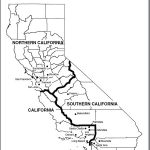In a unanimous 5-0 vote on Friday, July 3, the California Public Utilities Commission voted to significantly change electricity pricing for many California users – reducing the number of pricing tiers; phasing in time-of-use pricing; and adding a “super-user surcharge.” In a press release, the commission said the announced changes would create a “more cost-based structure, empower consumers with more opportunities to conserve, and promote resource optimization and grid reliability.”
The PUC decision affects customers of Pacific Gas and Electric, Southern California Edison and San Diego Gas and Electric, and those of some Northern California areas served by other utilities.
PUC President Michael Picker said the commission’s July 3 decision did not approve new rates but rather created a general rate restructuring plan to be phased in over four years. The three major utility providers will make proposals to the commission and the commission will then rework and/or adopt the proposals, within the outlined timelines.
The biggest change will be a reduction in the number of rate-pricing tiers from five to two, narrowing the price gaps between lowest and heaviest users. (SCE has five tiers; the other two big utilities have four). Some analysts suggest tier reduction will likely result in proportionally greater rate hikes for the lowest users than for higher users.
As to the likely rate increases for low-volume users, the commission cited the California Legislature’s 2001 freeze on rates for lowest-tier users and that current costs of energy production have grown, with the result that some lower-tier users are now paying less than actual costs of energy production. In their report, the commission said rates should be based on “cost-causation” principles that fairly apportion costs among all users. They said higher-tier users, whose upper-tier rates have increased, are now in effect subsidizing lower-tier users, and that “fair and equitable” pricing mandated rate revisions.
Said Picker, “Over time, with the lower-tier rates being frozen, the four-tiered rate structure departed increasingly from any cost basis and imposed every greater inequities on large-family households that were pushed into higher tiers in hot climate zones. Our decision helps align rates with the actual cost of service.” Picker said the commission’s recommendations will mean “utility customers will probably share costs more fairly.”
Some consumer advocates, including The Utility Reform Network and the Sierra Club, quickly criticized the decision. Said Mark Toney of TURN, “We think customers should be rewarded for saving energy, not punished. This will give energy hogs a break at the expense of customers who conserve.” Evan Gillespie, Sierra Club director, said, “[This decision] might as well have been written on utility stationery. The commission basically handed the utilities exactly what they have been lobbying for.”
The specific PUC rate revision details and timelines are:
• Tier flattening to two tiers, with a 25 percent differential between tiers, becomes effective by Jan. 1, 2019.
• A super-user electric surcharge will be introduced in 2017.
• Utilities must file proposed “time-of-use” default charges by Jan. 1, 2018 with TOU default rates to become effective on Jan. 1, 2019. Consumers can opt to remain within the two-tier rate structure as an alternative to TOU. TOU charges consumers more during peak hours giving them an opportunity to plan their electrical use accordingly.
• A gradual “glidepath” to a 30 to 35 percent average discount for low-income customers enrolled in the California Alternate Rates for Energy program begins in 2020.
• Any consideration of utility-recommended “fixed charges” each consumer would pay regardless of energy use cannot be considered prior to 2018.
The PUC decision also affects customer-owned net-metered solar systems. In simple terms, the higher a customer’s typical monthly bill, the more valuable rooftop solar is in reducing it, particularly at high-tier margins. Reducing the tier structure from five or four to two tiers could erode the reasons for installing solar, since it saves money by reducing high-end tier charges.
For more on the decision and the rate rollout, visit http://docs.cpuc.ca.gov/PublishedDocs/Published/G000/M153/K024/153024891.PDF










